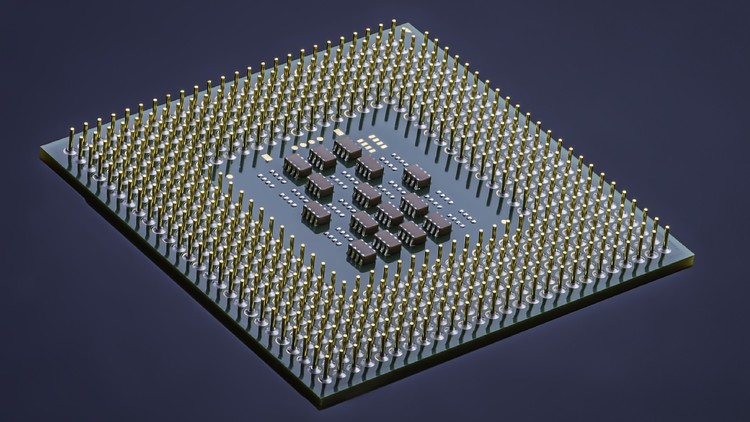FPGA (Field-Programmable Gate Array) Design & Implementation
Get a job as an FPGA designer. In this class, you will learn about FPGA Design Engineering and how to use tools like Protoflex and PLI. You will also learn about FPGA DSP Circuits, Protoflex, and more.
What you’ll learn
FPGA (Field-Programmable Gate Array) Design & Implementation
- Gain a complete understanding of FPGA design engineering and how to use it.
- Learn how to become an FPGA Design and Implementation Engineer.
- Make sure you know how to use FPGA Design flow and design tools to make things.
- Use Verilog to learn about and build FPGAs.
- Learn how to test FPGAs.
- Simulate and use SOPC Design.
- In this lesson, you will learn how to read data from peripherals.
- Learn how to use FPGAs to make DSP Circuits.
- Define word count with MapReduce on an FPGA.
- Describe Protoflex and hardware that can be changed.
- Understand the difficulties of using an FPGA called FPAA in mixed-signal technology.
- Get to know the tools and guidelines of Mentor Graphics.
- Define and run the Spartan FPGA and the Memristive FPGA.
- Use an FPGA to do image processing.
Requirements
-
You need to be excited and determined to make your mark on the world! This is what you need!
Description
It’s great to have you here at Uplatz’s FPGA Design and Implementation course!
FPGA stands for Field-Programmable Gate Array, and it means that you can change the way it works. This makes them very different from other types.
A lot of people are talking about FPGA programming these days because it has a lot of advantages over traditional ICs. FPGAs let you move tasks that use a lot of resources to hardware, which can speed things up a lot. FPGAs can be programmed and reprogrammed based on the needs of the project.
This allows for in-place feature updates and bug fixes, which is important for people who use the software from afar. FPGAs have customizable logic blocks (CLBs) and programmable interconnects that allow the designer to connect and configure the blocks to do a wide range of things, from simple logic gates to more complex tasks. Because of this, OEMs can start selling systems earlier in the design process because they have more freedom.
You will learn about Field-Programmable Gate-Array Devices (FPGAs) in this class so that you can use them to make prototypes or products for a wide range of applications. FPGA design is a complicated subject, but we’ll explain it in a way that makes it easy to learn the basics with just a little work, while still providing a challenge for more experienced designers. You’ll also learn about the benefits and drawbacks of implementing and buying IP. Participants in this course will learn about the basics of digital system design with FPGAs, and they will use them.
Functional Design of FPGAs
Functional design is the process of turning an idea for a system into an FPGA implementation that does what it needs to do. The basic idea for the design cycle must say how the design will be split up between different FPGAs if that is necessary. The first step in functional design is to come up with a way to describe a system’s parts (building blocks) in the most natural way possible for the component in question. Schematic capture with Design Architect is the easiest way to describe basic structures made from basic Actel parts, like Multi-bit registers and multiplexors (DA).
For things like decoders and ALUs, the easiest way to show how they work is to make a VHDL model that can be made by hand. It’s possible to use automated HDL generators such as Renoir to build the natural graph description of a VHDL model, but for FSMs, such as controllers, the simplest description is also the simplest. Simulating each of the building blocks on their own is a good way to make sure that they work properly.
Who this course is for:
- Engineers who work with FPGAs.
- The Engineers who work on FPGAs.
- Engineers who work with FPGA chips.
- Algorithm engineers for FPGAs.
- Newbies and beginners who want to become FPGA Design Engineers.
- People who help with the design of FPGA boards.
- Anyone who wants to learn about Embedded Engineering and FPGA Design.
- Engineers who work with FPGA cryptography.
- Engineers who work with FPGA design.
- It’s a job for people who work with FPGA and ASICs.
- Engineers who work with electronics and instruments
- Electronics designers who work on medical devices with FPGAs.
- There are people who work in the field of Electronics. In this case, the FPGA is a VHDL FPGA.
- They work with digital design.
FPGA (Field-Programmable Gate Array) Design & Implementation
12 Best Free Website Hosting Compared (2022)
Download Now









